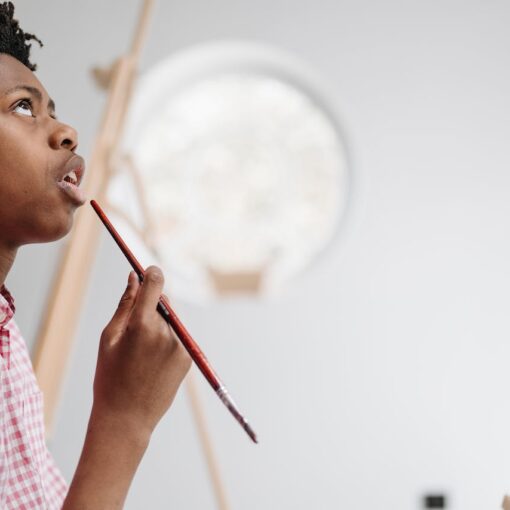Lateral thinking and creative thinking are often used interchangeably, signaling a departure from conventional logic to generate innovative solutions and ideas. Lateral thinking, a term coined by Edward de Bono, involves looking at problems from new or unexpected angles, seeking solutions outside standard patterns of thought. It emphasizes indirect and creative approaches over traditional step-by-step logic.
Creative thinking, on the other hand, is broader in scope, encompassing originality, imagination, and inventiveness that can be applied not just to problem-solving but to all forms of expression and ideation. While lateral thinking is a subset of creative thinking focusing on novel perspectives and solutions, creative thinking in itself is the ability to consider and hold together seemingly inconsistent elements and forces for the sake of generating new insights.
Key Takeaways
- Lateral thinking is a specific method within creative thinking aimed at problem-solving.
- Creative thinking is a broader concept that includes originality and inventiveness.
- Both thinking styles contribute to innovative approaches and problem solving, but each has distinct applications and techniques.
Conceptualizing Lateral and Creative Thinking

In exploring the domains of problem-solving and ideation, one encounters the distinct but interrelated concepts of lateral and creative thinking. These methodologies differ in approach and application, providing unique pathways to innovation.
Defining Lateral Thinking
Lateral thinking is an intentional technique for thinking outside of conventional frameworks. It encourages looking at problems from various angles rather than the straightforward, traditional approach that is characteristic of vertical thinking. This method is often associated with generating unexpected solutions by challenging the status quo and existing patterns and assumptions. Techniques such as provocations, and analogical reasoning are inherent to lateral thinking and aim to transform the perception of problems.
Defining Creative Thinking
On the other hand, creative thinking encompasses the holistic ability to create something new and original. It’s not limited to problem-solving but extends to all forms of expression and innovation. Creative thinking often involves divergent thinking, where one generates many ideas in a spontaneous and free-flowing manner without immediate judgment or analysis.
Comparing Patterns and Assumptions
Both lateral and creative thinking engage with existing patterns and assumptions, but they do so differently:
- Lateral Thinking: It deliberately disrupts existing patterns to escape ingrained ways of thinking, thereby circumventing traditional assumptions and fostering new insights.
- Creative Thinking: While it may challenge conventional assumptions, it also builds upon them to create novel connections and ideas.
By examining and contrasting these thought processes, one can better understand how each contributes uniquely to the generation of innovative solutions and creative works.
The Role of Thinking Processes in Problem-Solving

Effective problem-solving strategies harness various thinking processes to produce innovative solutions. It’s essential to utilize reasoning and leverage specialized thinking techniques in order to resolve complex issues effectively.
Outside the Box Approaches
“Thinking outside the box” refers to creative thinking that defies conventional frameworks and experiences. Edward de Bono, a proponent of innovative thinking methods, emphasizes the importance of unconventional reasoning in discovering unique solutions. Lateral thinking, a concept introduced by de Bono, plays a critical role in enabling individuals to view problems from new, unexplored perspectives. This approach often involves setting aside traditional patterns and exploring ideas that may initially seem unrelated to the problem at hand.
Innovation Through Thinking Techniques
In the quest for innovation, structured thinking techniques such as de Bono’s Six Thinking Hats have shown their effectiveness in compartmentalizing thought processes to examine problems from diverse angles. Each ‘hat’ represents a different style of thinking – from emotive responses to factual analysis, encouraging a multifaceted examination of the issue. The deliberate application of these thinking techniques aids in breaking down complex problems, fostering innovation, and leading to a well-rounded approach to problem-solving.
Techniques and Approaches
The focus of this section is to present practical methods individuals and groups can implement to enhance their lateral thinking abilities and creative brainstorming skills, offering a pathway to innovative problem-solving.
Lateral Thinking Techniques
Lateral thinking is the art of approaching problems indirectly and creatively. Key techniques in lateral thinking include:
- Provocation and Challenge: By proposing a deliberate and provocative statement, individuals are encouraged to see beyond conventional solutions.
- Random Input: Introducing an unrelated word or image to trigger new connections and perspectives.
- Mind Mapping: This technique involves visualizing thoughts and exploring their connections to uncover novel solutions.
- SCAMPER Method: An acronym that stands for Substitute, Combine, Adapt, Modify, Put to another use, Eliminate, and Reverse. Each prompts a question that helps think laterally.
Creative Brainstorming and Ideation
For a more creative approach, the following methods stand out:
- Brainstorming Sessions: Groups gather to freely share and expand on ideas without the constraints of immediate criticism.
- Ideation Sessions: Structured times when teams come together with the clear goal of generating new ideas, typically following certain ground rules to foster an open environment.
- Reflection: Taking time to reflect on the problem and the brainstormed ideas to allow the subconscious mind to work on creative solutions.
- Six Thinking Hats: Another technique developed by Edward de Bono, it involves looking at a problem from six distinct perspectives, symbolized by different colored hats, to explore all angles of a situation creatively.
Practical Applications and Benefits
Lateral and creative thinking methodologies serve as significant tools in today’s innovation-driven landscape. They enhance cognitive abilities and provide insightful approaches toward problem-solving, thereby fostering environments vibrant with creative energy and group cohesion.
Enhancing Cognitive Power and Insight
Lateral thinking is a cornerstone for boosting cognitive power and generating insight in problem-solving scenarios. This approach encourages individuals to break from traditional patterns of thought, thus cultivating a deeper understanding of the problem statement. Methods such as provocative operations and random entry, articulated by Edward de Bono, serve as tools that challenge the status quo, leading to unconventional and highly insightful solutions. By stepping outside habitual cognitive pathways, one can uncover novel perspectives that were previously unseen.
Fostering Creative Environments
Creating a creative environment is pivotal for the germination of creative energy within groups and organizations. Lateral thinking contributes to this by promoting an atmosphere where out-of-the-box ideas are not only encouraged but are an expectation. When diverse viewpoints collide, the resulting group cohesion can expedite the ideation process, culminating in innovative outcomes. Moreover, creative thinking opens the door to exploration without boundaries, enabling an inclusive setting where all participants are empowered to share and develop ideas without fear of judgment. These methodologies transform passive environments into dynamic spaces, primed for ongoing creation and innovation.
Challenges and Enhancements in Thinking
In the quest to refine thinking skills, individuals encounter specific challenges such as inherent constraints and biases. Conversely, the enhancements involve deliberate training and the development of diverse thinking abilities.
Overcoming Constraints and Biases
Constraints in thinking often manifest as entrenched habits or conventional methods that inhibit novel idea generation. To overcome these, one must seek alternative solutions that challenge the status quo. Identifying and acknowledging biases is another fundamental step. It is through communication and exposure to different perspectives that individuals can start to diminish the influence of preconceived notions on their thought processes.
Studies show that engaging in feedback loops can help identify and reduce biases, leading to an improvement in the quality of decisions and ideas.
Training and Developing Thinking Skills
The development of thinking skills can be significantly enhanced through specific forms of training designed to nurture lateral thinking. These training programs often utilize strategies such as:
- Promoting the consideration of multiple viewpoints
- Encouraging the practice of brainstorming to yield a variety of solutions
- Incorporating exercises that enhance the ability to think beyond obvious associations
To improve lateral thinking, individuals might employ techniques like random entry or provocative operations. Proper training can lead to an enhanced ability to navigate complex problems and produce creative, efficacious results.
Frequently Asked Questions
In this section, we explore common inquiries about lateral and creative thinking, emphasizing the nuances that set them apart and their practical applications in various contexts.
What distinguishes lateral thinking from vertical thinking in problem-solving approaches?
Lateral thinking involves approaching problems through an indirect and creative angle, rather than the more traditional, logical method known as vertical thinking. This thinking style is characterized by the exploration of multiple possibilities and perspectives.
How can lateral thinking be applied in educational settings to enhance creativity?
Educational strategies can incorporate lateral thinking by promoting open-ended questions and encouraging students to think beyond conventional solutions. This approach fosters an environment where creative ideas are valued over the standard responses.
In what ways does lateral thinking contribute to entrepreneurship and innovation?
Entrepreneurs and innovators often utilize lateral thinking to disrupt markets and create novel products. This form of thinking allows them to see beyond the current paradigm and explore groundbreaking approaches to business challenges.
Can you provide some examples of how lateral thinking is utilized in the workplace?
In the workplace, lateral thinking is applied during brainstorming sessions, strategy development, and when solving complex problems. Employees might use it to reframe a problem or by suggesting unorthodox solutions that could lead to productive outcomes.
How is lateral thinking different from creative thinking when seeking innovative solutions?
While lateral thinking is a specific technique that systematically generates new ideas by altering perspective, creative thinking is broader, encompassing any process that leads to novel ideas and solutions. Lateral thinking is often a component within creative thinking processes.
What are the key characteristics that separate lateral thinking from critical thinking?
Critical thinking is a logical, structured approach aiming to assess the validity of statements and arguments through analysis and deducing conclusions. On the other hand, lateral thinking prioritizes the generation of new ideas without immediate judgment or analysis.





